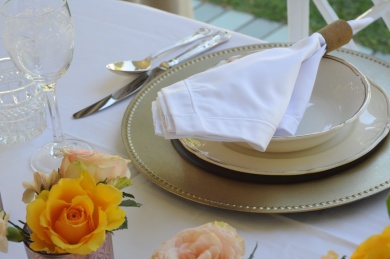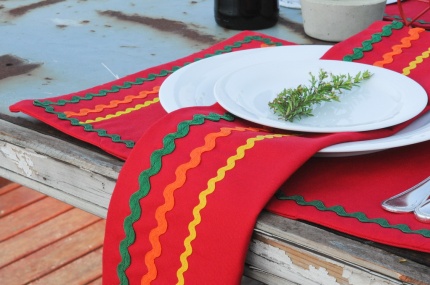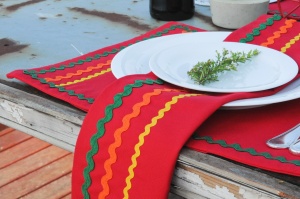A Chinese writer once likened the reverse side of a woven fabric to a language that has been translated: The threads are there, but the complexity of colors and shapes is lost. While this may be true of most textiles, damask is a dazzling exception. It is woven in such a way that the pattern on one side is the reverse of the other. The double-faced design lends itself to a variety of applications. Want to know what makes Damask table linen so special? Read on.. http://www.linendrawer.co.za/blog

Please use a picture of from our bayede! Range on both pages (blog & click through) – use different pictures.
As the fabric is often made with fine materials and comes in elaborate designs, it is one of the world’s most luxurious and intriguing fabrics.

Traditionally, damask is made from a single shade of silk or linen. The pattern is recognized by the way light plays off the warp, or vertical, and weft, or horizontal, threads. Some damasks even look different depending on the time of day. Over the last century, the definition of damask has expanded to include fabrics made with two or three colors, as well as other fibres, such as cotton, wool, or rayon. Still other fabrics are merely printed to look like damask, but these, of course, are not reversible.

The first silk damasks, consisting primarily of floral and animal patterns, were produced in China around 300 B.C. This was the beginning of a fascinating history. Damask and fabrics like it, were so desired that rulers of kingdoms went to great lengths to learn the secrets of silk weaving. In the sixth century, the Byzantine emperor commissioned monks to smuggle silkworms out of China in hollowed-out walking sticks.

Damask table linens have their own story. They were first produced in the 1600s, when weavers in the Low Countries (today’s Belgium and the Netherlands) began making fine-quality white linen damask tablecloths and napkins. These were embellished with the previously established patterns, as well as intricate scenes including depictions of famous battles or stories from the Bible. Linen damask became up to date on the tables of well-to-do Europeans and Americans — a trend that continued for centuries. In 1926, etiquette expert Emily Post wrote of damask, “No other table covering, no matter how fine or elaborate, satisfies our inherent sense of faultless suitability.” Today’s taste makers still agree with her.
Despite its historic roots, damask can appear delightfully up-to-date.









 All fibre types should be washed at low temperatures to
All fibre types should be washed at low temperatures to It is not recommended that cotton fabrics be bleached as the bleach candegrade and break down the cotton fibre. Polyester cotton fabrics are less sensitive to bleach. In both cases, it is of utmost importance to ensurewhen using bleach it is correctly diluted, treatment in cold water and all residue of the bleach removed before washing . Should fabrics not be rinsed thoroughly, and washed at higher temperatures, it will probably result in holes. Do not bleach any coloured fabrics, as this will lead to fading and white spots on your table linen
It is not recommended that cotton fabrics be bleached as the bleach candegrade and break down the cotton fibre. Polyester cotton fabrics are less sensitive to bleach. In both cases, it is of utmost importance to ensurewhen using bleach it is correctly diluted, treatment in cold water and all residue of the bleach removed before washing . Should fabrics not be rinsed thoroughly, and washed at higher temperatures, it will probably result in holes. Do not bleach any coloured fabrics, as this will lead to fading and white spots on your table linen Generally hand irons should be sufficient for the ironing of table clothsand serviettes. Certain press irons, should your establishment have one,will also work very well. The table cloths and serviettes should be ironed with a warm iron.
Generally hand irons should be sufficient for the ironing of table clothsand serviettes. Certain press irons, should your establishment have one,will also work very well. The table cloths and serviettes should be ironed with a warm iron. These products can normally be tumble dried. Of course over dryingshould be avoided as far as possible.
These products can normally be tumble dried. Of course over dryingshould be avoided as far as possible.